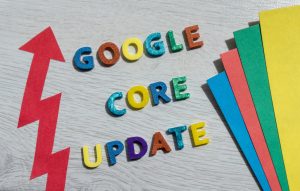Step into the dynamic realm of 2023, where the digital landscape is undergoing a revolutionary shift propelled by the force of AI. In an era dominated by social media, mobile devices, and intelligent technologies, digital advertising has surged to unparalleled significance.
As we stand at the intersection of technology and marketing, it’s crucial to explore the foremost trends shaping digital advertising in this ever-evolving landscape. Let’s embark on a journey to unravel the top trends of this year and gain insights into the future of AI-powered advertising.

1. Take Advantage Of Automation
In the last few years, digital marketers have begun to utilise automation to streamline their ad creation processes and reduce time-consuming manual labour. This has resulted in a 150% increase year-over-year in removing tedious manual steps of creating campaigns. Here are some examples:
- Data Analysis: Automation enables the processing and analysis of large volumes of data from sources like sensors and the Internet of Things (IoT), allowing for real-time insights.
- Ad Targeting: Digital privacy concerns have prompted changes in online advertising rules, impacting data-driven ad targeting.
- Campaign Management: Automation streamlines campaign management by scheduling and executing marketing campaigns across various channels.
- Lead Nurturing: Automated email marketing workflows handle lead nurturing, ensuring timely and personalised interactions with potential customers.
- Personalisation: Automation facilitates personalized customer experiences by tailoring content and recommendations based on user behavior.
- E-commerce: Digital marketplaces use automation to attract and manage sellers, enhancing competition and value propositions.
- Reporting and Analytics: Automation tools provide real-time reporting and analytics, allowing marketers to track and measure campaign performance more efficiently.
- Social Media Management: Automated tools handle social media posting, engagement, and content scheduling.
- Search Engine Advertising: Automation optimises search engine advertising by managing keyword bids and ad placements.
This adoption of automation is saving not only time but also money. Automation enables marketers to make data-driven decisions that provide the best results for their campaigns and generate insights across multiple campaigns simultaneously.
As we come in to the end of 2023, automation will continue to become even more prevalent among digital advertising teams, allowing them to focus on more strategic tasks rather than mundane manual ones.
2. Leverage AI and Machine Learning
In addition to automation, artificial intelligence (AI) and machine learning are increasingly important in digital advertising. AI technology can be used to understand customer preferences better and create personalised ads tailored to each user’s needs. For example, marketers can leverage AI tools such as natural language processing (NLP) to gain insights into how their target audience talks about their product or service. This information can then be used to create targeted campaigns that speak directly to a customer’s needs.
In 2023, AI and machine learning stand at the forefront of campaign optimization. Consider the healthcare sector, where AI analyzes patient data to forecast disease outbreaks and allocate resources efficiently, minimizing risks. Likewise, the finance industry leverages AI-driven algorithms to predict market trends, guiding investors towards lucrative opportunities.
Furthermore, AI-driven chatbots have revolutionized customer service, as seen with Vodafone’s real-time assistance tool. This technology ensures prompt issue resolution, enhancing customer satisfaction and loyalty.
Another remarkable example is the energy sector. Machine learning algorithms monitor the performance of renewable energy sources like solar panels and wind turbines. By analyzing operational data, these systems optimize maintenance schedules, ensuring optimal efficiency and longevity.
In the realm of marketing, AI analyzes vast datasets to discern consumer preferences, enabling personalized product recommendations and targeted advertisements. For instance, Drift employs AI-driven chatbots and natural language processing to streamline sales cycles and improve customer interactions.
ChatGPT’s Dominance
Undoubtedly, ChatGPT has taken the digital landscape by storm in a matter of months, even outpacing the rapid growth of popular social media platforms. Developed by OpenAI, ChatGPT is not just a tool; it’s a revolution in marketing strategies. Since its introduction earlier this year, it has emerged as a game-changer for marketers seeking an efficient way to craft ad copies using the prowess of natural language processing (NLP).
This technology marvelously streamlines the ad creation process, allowing marketers to effortlessly generate compelling content that resonates with audiences. The resulting impact transcends mere time and cost savings; it empowers marketers to tap into the true potential of their campaigns.
Such an innovation exemplifies the harmonious fusion of cutting-edge AI and human creativity, unveiling a new era in advertising and branding. The term “revolutionary” barely scratches the surface when describing ChatGPT’s profound influence, and its journey from viral sensation to transformative marketing tool is a testament to its remarkable significance in today’s digital ecosystem.
3. Videos, Videos, and More Videos
Video content is projected to be the most popular form of digital advertising in 2023, with motion-based creative such as videos and reels at the top of the list for visual asset usage. This makes sense, considering that vertical video has become so increasingly popular among younger generations.
When it comes to which platforms brands are favoring in 2023, it’s no surprise that YouTube and Instagram will come out on top. Of all respondents surveyed, 46% dedicated more than a quarter of their marketing budget to social media advertising, with 35% saying Instagram yielded the best ROAS and 48% saying YouTube did. These two platforms also saw a significant increase in ad spending, with 79% planning to invest more with YouTube and 75% planning to invest more with Instagram.
Notably, TikTok has also seen tremendous growth, increasing 25% in the number of respondents buying ads on the platform. This could be attributed to its widespread popularity among younger audiences that prefer vertical video content and motion-based creative like videos and reels.
It’s clear that digital advertising trends are shifting towards social media sites like YouTube and Instagram, along with other visual-focused platforms such as TikTok. As we move into 2023, B2C brands are likely to invest a significant portion of their advertising budget in video content as they prioritise these platforms that are popular with younger consumers.
4. Be Authentic With The Help of StoryBrand Framework
As we move into the second half 2023, it’s essential that businesses focus on creating meaningful connections with their customers and building authentic connections. The StoryBrand Framework can help brands create content that resonates with their followers in a genuine way.
The StoryBrand Framework works by focusing on the customer’s journey from problem to resolution. It helps to identify what the customer needs, how they feel about it, and why they should choose your product or service over others. This framework is all about understanding the customer’s point of view, which will make it easier for businesses to create content that speaks directly to them.
Using the StoryBrand Framework, brands can develop stories tailored to their target audience and create content conveying messages of hope, authenticity, and trust. By highlighting how your product or service can help solve an issue for a customer, you’ll be able to establish a strong connection with them.
The StoryBrand Framework should also be used in combination with influencer marketing. You should look for influencers who can authentically tell stories about your brand and use user-generated content to cultivate relationships with customers.
By leveraging the power of storytelling and influencer marketing together, businesses will be able to stay top-of-mind and foster customer loyalty in the digital advertising landscape of 2023.
Bottom Line
Digital advertising this year is all about staying on top of the latest trends and technologies. Automation, AI, and machine learning are essential tools for creating data-driven campaigns that generate results. Video content is king, with YouTube, Instagram, and TikTok leading the way.
Finally, businesses should focus on authenticity and connection with their customers by leveraging the power of storytelling and the StoryBrand Framework.
If you’re looking to stay ahead of the game and take your digital advertising to the next level, Results and Co. can help. As a certified StoryBrand company, we specialize in creating authentic, compelling content that resonates with your target audience. Contact us today to learn more about our services and how we can help you achieve your marketing goals.
See how our team can drive an insane amount of highly targeted traffic to your website and then convert it.
Websites that sell:
Most websites don’t convert, your’s will.
SEO that ranks:
Get on the first page of Google, guaranteed.
Ads that work:
Clear predictable returns.
Content Marketing:
Our team will create the images, write the articles and grow your brand.










